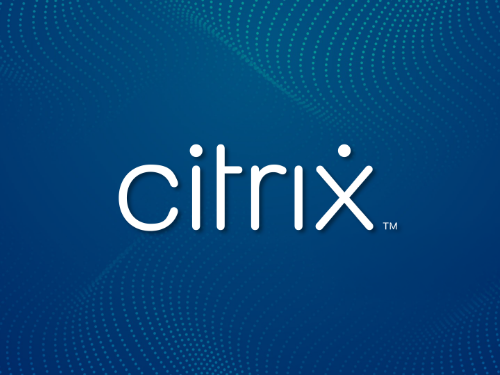Whether you’re just getting to grips with your first internship in a marketing department or you’re a 30-year marketing industry guru, we can all agree that acronyms are well and truly ingrained in the industry and used daily. While some acronyms are easy to remember and used casually in our day-to-day conversations, others are a little more obscure and sporadically used. In today’s blog post, we’ll run through over 50 sales and advertising-centric acronyms; some you need to know, most you should know, and others you may never come across and probably don’t need to memorize.

- CAC (Customer Acquisition Cost)
The cost of finding your next paying customer, the cold hard cash that got them through the door and signing on the dotted line.
- CPM (Cost Per Mille)
The cost of showing off your ad to 1,000 people! The amount of money spent to show your product to 1,000 users on the other end.
- ROI (Return on Investment)
Your ROI expressed as a percentage of the original investment – aka, whether this campaign was a good idea.
- CTA (Call-to-Action)
A direction for your audience to take action, like “Sign up now!”, for example.
- CTR (Click-Through Rate)
The percentage of people who take action and click the button you wanted them to click.
- LTV:CAC (Lifetime Value to Customer Acquisition Cost)
Basically, the money you make from keeping a customer long-term divided by the cost of getting them onboard.
- CPL (Cost Per Lead)
The cost of finding your next potentially viable lead.
- ROAS (Return on Advertising Spend)
Your ROAS can be described like this. If you made $2, but spent 1, you have a ROAS of 2x.
- GTM (Go-to-Market)
Your overall plan for getting your product or service out there and seen.
- OKR (Objectives and Key Results)
A way to set and track your goals and progress.
- KPI (Key Performance Indicator)
The metric(s) used to track and measure the success of your goals and objectives.
- UTM (Urchin Tracking Module)
A simple code added to a URL to track where your website traffic is coming from.
- CPC (Cost Per Click)
The cost of one single click on your ad or link.
- ESP (Email Service Provider)
A company that helps you with your email marketing, from sending messages to keeping track of open rates.
- SEO (Search Engine Optimization)
The process of optimizing your website to rank higher in search engine results.
- SEM (Search Engine Marketing)
Using paid ads on search engine results pages to drive traffic to your website.
- PPC (Pay-per-Click)
An online advertising model where you only pay when someone clicks on your ad.
- GA (Google Analytics)
A web analytics service offered by Google to track and report on your website traffic.
- CRM (Customer Relationship Management)
The strategies and tech used to manage and analyze your customer interactions and data.
- SMM (Social Media Marketing)
The use of social media platforms to promote your product, service, or brand.
- PLG (Product Led Growth)
A growth strategy focused on using your product to attract and retain customers.
- PQL (Product Qualified Lead)
A lead who has shown interest in your product and is likely to buy.
- CVR (Conversion Rate)
The percentage of people who take a desired action (such as making a purchase) on your website or landing page.
- CRO (Conversion Rate Optimization)
This one’s all about maximizing the number of people who do what you want them to do on your website.
- YoY (Year-over-Year)
A fancy way to compare your metrics from one year to the previous. Think of it like a before and after transformation.
- ARPU (Average Revenue Per User)
How much money each user is bringing in for you on average, so you can see who your top spenders are.
- ACV (Annual Contract Value)
The total amount of money a customer is worth to you over the course of a year, based on their recurring revenue contract.
- ICP (Ideal Customer Profile)
A detailed description of your dream customer, including demographics and psychographics. This helps you focus your marketing efforts and attract more of your target audience.
- MQL (Marketing Qualified Lead)
A lead that your marketing team has deemed likely to convert into a customer based on their engagement with your marketing efforts.
- SAL (Sales Accepted Lead)
A lead that’s been checked out and is ready for the sales team to work their magic.
- PPL (Pay Per Lead)
The cost of finding your next potential customer through various marketing channels, where you only pay when you actually get a lead.
- SAM (Serviceable Available Market)
The portion of the total addressable market that you can actually serve. Like, who you’re realistically compatible with.
- DSP (Demand-Side Platform)
A platform that lets advertisers buy ad space.
- DMP (Data Management Platform)
A platform used for organizing and managing data for targeted advertising and audience analysis.
- SSP (Supply Side Platform)
The platform that connects advertisers with a massive network of publishers to serve up their ad campaigns.
- SQO (Sales Qualified Opportunity)
A potential customer who has shown interest and is ready to move forward with a sale.
- SAO (Sales Accepted Opportunity)
A potential sale that has met certain criteria and is considered a valid opportunity for the sales team to close.
- BANT (Budget, Authority, Need, and Timeline)
A way for sales reps to figure out if a potential customer is ready to make it official.
- BDR (Business Development Representative)
These are the salespeople who are constantly on the prowl for new biz opportunities. Think of them as the hunters.
- SDR (Sales Development Representative)
These are the salespeople who take leads and turn them into real opportunities. Think of them as nurturers.
- AE (Account Executive)
The rockstar salesperson who helps you achieve your advertising goals and dreams.
- POC (Proof of Concept)
Think of it as a mini experiment to show that your big idea is actually, well, a big idea.
- MARTECH (Marketing Technology)
All the cool tech tools you need to make your marketing dreams come true.
- SOV (Share of Voice)
The portion of the advertising market that your brand has claimed as its own.
- OOH (Out of Home)
Advertising that’s displayed in public spaces like billboards and transit ads.
- PR (Public Relations)
The art of managing your company’s reputation and relationship with the public.
- NRR (Net Revenue Retention)
A metric that measures the amount of revenue you keep from existing customers.
- POS (Point of Sale)
The place where a customer makes a purchase, such as a store checkout.
- CPG (Consumer Packaged Goods)
Products that are sold in retail stores, such as groceries and household items.
- AOV (Average Order Value)
The average amount spent per transaction.
- SKU (Stock Keeping Unit)
A unique identifier for each product in a company’s inventory.
Hopefully, we were able to share a few acronyms you either didn’t know at all or knew but didn’t know what it meant. Interested in learning about more marketing-focused acronyms? Check out Part 2 of our acronym blog series.
To learn more about Bluetext and our marketing services, contact us today.


